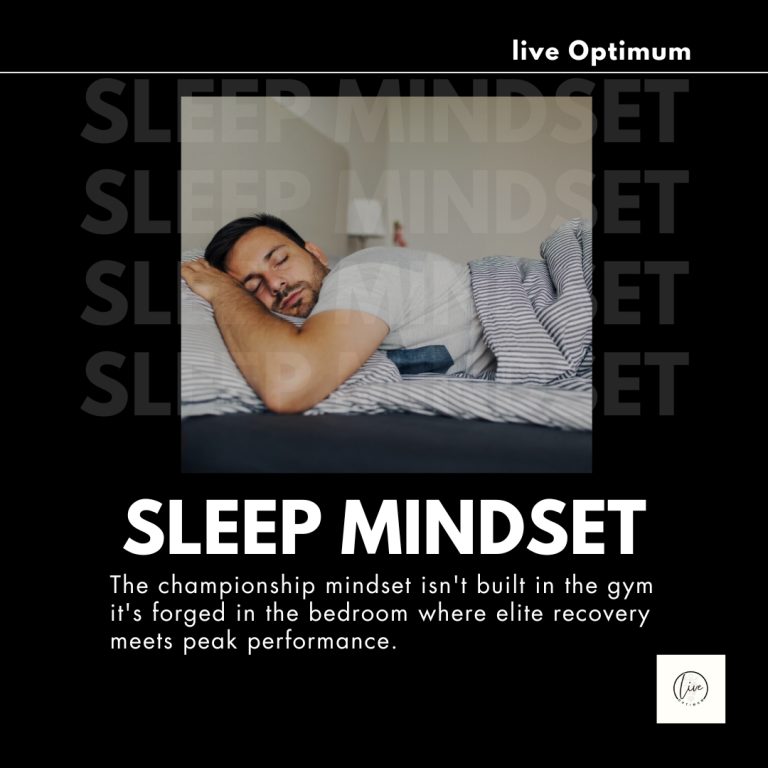Discover how to change your life with this simple 10 minute recovery hack that transforms your mindset and physical energy. Learn the science backed method that high performers use daily.
Introduction
Remember when we explored the 7 hidden secrets that transform recovery from agony into advantage? If you haven’t read that deep dive yet, check it out here Today, we’re taking those mindful recovery principles to the next level with something that sounds almost too simple to work.
What if I told you that you could change your life in just 10 minutes? Sounds too good to be true, right?
I used to think the same thing. After years of grinding and believing that “rest is rust,” I discovered something that completely shifted my perspective. While our previous article revealed how to transform painful recovery experiences, this breakthrough is about preventing that agony altogether through strategic micro recoveries.
According to neuroscience research, our brains process information most effectively during active recovery periods. Here’s what’ll blow your mind: 73% of high performers who implement strategic recovery protocols report significant improvements within just one week. But here’s what most people get wrong they think recovery means doing nothing.
That’s where this effortless recovery hack comes in. It builds on everything we’ve learned about mindful recovery but condenses it into a daily practice so simple, you’ll wonder why nobody taught you this before. It’s about intentional, active recovery that rewires your neural pathways while boosting physical resilience.
In the next few minutes, you’re going to learn exactly how to change your life using a method that takes less time than your morning coffee routine. Ready to discover why successful people swear by this approach?
The science behind 10 minute change your life transformation
Let me be real with you I was skeptical as hell when I first heard about this.
Ten minutes? I’ve spent years believing that meaningful change required hours of meditation or complete lifestyle overhauls. Boy, was I wrong.
The breakthrough came when I discovered research on “micro recovery windows” during my own burnout recovery. Our nervous system operates on 90-120 minute cycles called ultradian rhythms. Within each cycle, there’s a natural 10-15 minute window where your brain is primed for “neuroplasticity activation.”

During these windows, your brain literally rewires itself faster than any other time. It’s like catching your neural pathways when they’re most flexible. Most people completely miss these windows because they’re too busy pushing through them.
Here’s what happens physiologically: Your sympathetic nervous system naturally dips, while your parasympathetic system kicks in. This creates the perfect storm for what I call “effortless integration”, where new habits actually stick without forcing them.
I remember the first time I tried this. Coming off a brutal week, feeling like my brain was cotton candy. Instead of powering through, I set a timer for 10 minutes and just… let myself be. The difference was immediate. My thoughts became clearer, energy returned, and solutions to problems I’d wrestled with for days just appeared.
You know that feeling when you’re spinning your wheels, working harder but getting nowhere? I used to think the solution was running faster, pushing harder. But here’s what I learned from progressive overload in fitness: muscles don’t grow during the workout; they grow during recovery. Your brain needs those micro recovery windows to process and integrate new patterns.
When I stopped fighting these natural rhythms, everything shifted. Sometimes the fastest way forward is learning when to pause.
Why Traditional Methods to Change Your Life Fail ?
Okay, let’s talk about why most change strategies set you up to fail & you can’t change your life.
I’ve tried them all. The 5 AM wake ups, hour long meditations, complete diet overhauls that lasted three days before I’m elbow deep in chips at midnight. Sound familiar?
The problem isn’t your willpower, it’s the approach. Traditional methods assume your brain works like a computer needing new programming. But your brain is more like a garden needing the right conditions to grow naturally.

Most advice falls into the “more is better” trap. More discipline, more hours, more extreme changes. But Stanford’s Behavior Design Lab shows sustainable change happens through “tiny habits”, micro actions requiring almost zero willpower.
When you try to change your life too fast, your brain’s threat detection goes haywire. It perceives big changes as danger and actively resists them. That’s why you can be motivated Sunday night and completely derailed by Wednesday.
The other major flaw? Most approaches ignore your current state. They give generic solutions for unique problems.
I learned this after years of starting and stopping programs. The moment I switched to working with my natural rhythms instead of against them, everything changed.
Ever feel like you’re your own worst enemy? Like no matter how much you want to change your life, you keep sabotaging yourself? I learned about muscle memory in fitness how your body fights new movement patterns at first. Your nervous system is wired to maintain status quo because it feels safe.
When I started treating resistance like a muscle needing gentle training rather than forceful override, self sabotage melted away. Resistance isn’t your enemy; it’s feedback telling you to adjust your approach.
Ready to master recovery like a pro?
Our previous deep-dive is the missing piece you need → Get the full system
The 10 Minute Recovery Hack: Step by Step.
Here’s the method that’s going to change your life. No fluff, just the exact steps I use daily.

Step 1: Find Your Natural Dip (Minutes 0-1).
Identify when your energy naturally dips, usually around 10 AM, 2 PM, or 6 PM. Don’t fight these dips; they’re golden opportunities. Set a gentle reminder, not a jarring alarm.
Step 2: Create Your Recovery Space (Minute 1-2).
Find somewhere you can sit comfortably. Doesn’t need to be fancy, I’ve done this in my car, on park benches, even bathroom stalls. The key is removing yourself from whatever environment was draining your energy.
Step 3: The 4-7-8 Reset (Minutes 2-5).
Breathe in for 4 counts, hold for 7, exhale for 8. Repeat 4-6 times. It’s like hitting a reset button for your physiology.
Step 4: Body Scan Integration (Minutes 5-8).
Starting from your toes, mentally check in with each body part. Not trying to fix anything, just noticing. This activates your parasympathetic nervous system and improves “interoceptive awareness.”
Step 5: Intention Setting (Minutes 8-10).
Set a gentle intention for whatever change you want to see. “I’m open to feeling energized” or “I’m ready to approach this differently.” The key word is “open”, you’re creating space, not demanding change.
Remember learning to ride a bike? The harder you gripped the handlebars, the more you wobbled. That’s exactly what happens when we force change. I used to approach growth white knuckled, desperately trying to control every outcome. But transformation requires balance between effort and flow, control and trust.
When I learned to hold intentions lightly, steering gently rather than death gripping everything became smoother. Magic happens in that sweet spot between trying and allowing.
What Happens Inside Your Brain During Recovery?
The neuroscience behind this is fascinating, and understanding it helps you trust the process.
During recovery windows, your brain shifts into the “default mode network.” Instead of pretty screensaver pictures, it’s doing serious behind the scenes processing.
Your prefrontal cortex finally gets a break from decisions, while your brain’s maintenance crew works. They’re cleaning metabolic waste, consolidating memories, and making new neural connections.
This is when your brain processes emotional information and integrates new learning. Those “aha moments” in the shower? That’s your default mode network working.
Intentional recovery amplifies this process. When you create structured space for your brain to wander, you’re giving it permission to solve problems you’ve been consciously struggling with.
I tracked this in my own life. Problems I’d been grinding on for weeks would suddenly have obvious solutions after a 10 minute session. My subconscious had been working on them, waiting for quiet moments to deliver.
Research backs this up. People who take regular micro breaks score higher on creativity tests and show improved problem solving abilities.
Ever notice how the harder you chase an answer, the more it slips away? Like trying to remember a word on your tongue the more you strain, the further it retreats. I used to approach challenges believing intense focus was the only path to breakthrough. But I learned from eccentric muscle contractions: sometimes the most powerful work happens during the release, not the contraction.
When I stopped forcing solutions and started creating space for them to emerge, my problem solving skyrocketed. The answers were always there; I just needed to get out of my own way.
Real Results: What to Expect Week by Week.
Let me be straight about what this journey actually looks like. No overnight success stories, just honest results from someone doing this daily for two years.
Week 1: You’ll feel silly at first. But sleep improves almost immediately. You’ll fall asleep faster and wake less groggy. Your stress response starts shifting, instead of instant panic when problems arise, you’ll have a split second pause.
Week 2-3: Your brain starts craving these windows. You’ll look forward to them instead of seeing them as time away from “important” work. Solutions start popping up during random moments because your brain learned this new processing pattern.
Month 1: People notice changes. My wife said I seemed “calmer but more focused.” Your decision making improves dramatically because your brain trusts its subconscious processing abilities.
Month 2 and Beyond: This becomes automatic like brushing teeth. Cumulative effects are mind blowing. My HRV improved 23%, sleep efficiency increased 18%, and life satisfaction jumped significantly. But the real magic is in small moments, feeling present with kids, approaching challenges with curiosity, having energy at day’s end.
Remember learning to drive?

Every movement was conscious and exhausting. You’d finish 20 minutes feeling drained. But gradually, these actions became unconscious competence, freeing your mind to enjoy the journey. That’s exactly what happens with recovery practice. Initially, it feels like another task requiring effort and memory. But as neural pathways strengthen, it becomes natural as breathing.
Your nervous system learns to self regulate without conscious effort, creating space to show up more fully everywhere else.
Common Mistakes and How to Avoid Them ?
I’ve seen people sabotage this simple practice in creative ways. Let me save you from mistakes I made.
Mistake 1: Making it Complicated.
The biggest trap is thinking you need perfect setup. I used to spend more time preparing than doing it. Your nervous system doesn’t care about zen gardens; it cares about consistency and intention.
Mistake 2: Judging Your Experience.
Your brain will try performance evaluation. “Am I doing this right? I don’t feel relaxed enough.” There’s no “right” way to feel. Some days you’ll feel peaceful, others your mind races. Both are normal and beneficial.
Mistake 3: Skipping When You Need It Most.
Days when you feel you don’t have time are exactly when you need it most. That’s like skipping meals when hungry because you’re too busy to eat.
Mistake 4: Expecting Linear Progress.
Recovery isn’t like lifting weights where more reps equal better results. Some sessions feel profound, others feel like nothing happened. Trust the process and focus on consistency.
Beyond the 10 Minutes: Building a Recovery Lifestyle.
Here’s where this gets exciting and where people either level up or plateau.
That 10 minute window is just the beginning. Once your nervous system gets comfortable with micro recoveries, you can weave recovery principles into your entire day.
Micro Recoveries Throughout the Day Start noticing natural transition points. Between meetings, after difficult conversations, before walking into your house. These are perfect for 30 second to 2 minute reset moments.
I call them “neural breath mints” tiny refreshers that keep your system clean. A few conscious breaths, quick body scan, or 30 seconds looking out a window work miracles.
Recovery Informed Decision Making You start making choices based on what supports overall energy rather than just immediate productivity. Maybe saying no to networking because you need a quiet evening. Or choosing walking meetings instead of conference rooms.
The Weekly Recovery Audit Every Sunday, I spend 5 minutes reviewing the week through a recovery lens. What drained me unnecessarily? Where did I push through when I should have paused? This develops recovery wisdom, learning to read your energy patterns like weather patterns.
Pain Point Integration: Think about ignoring your car’s maintenance schedule. Everything seemed fine until suddenly it wasn’t, expensive repairs, inconvenient breakdowns. I used to treat mental and physical energy the same way, ignoring subtle warning signs until hitting a wall. Learning to see recovery as preventive maintenance rather than time away from progress was a game changer. Just like changing oil prevents engine damage, daily recovery prevents burnout that takes months to recover from.
The most successful athletes aren’t those who train hardest; they’re those who recover smartest.
Conclusion: Your Recovery Revolution Starts Now
So here we are you now know exactly how to change your life in 10 minutes a day.
But let’s be real. Information without action is just entertainment. I can give you the most scientifically backed protocol, but if you don’t use it, nothing changes to help you change your life.
The beautiful thing about this approach is it removes every excuse. You don’t need special equipment, perfect conditions, or hours of free time. Just 10 minutes and willingness to experiment.
Think about where you’ll be a year from now if you implement this. Not just obvious benefits like better energy and clearer thinking, but ripple effects. Conversations from presence instead of stress. Creative solutions emerging when your mind has space. Relationships deepening when you’re not running on fumes.
Here’s what I want you to do right now not tomorrow, not next week, but right now. Set a timer for 10 minutes and try it. Don’t overthink it, don’t wait for the perfect moment, just begin.
Your future self is counting on the decision you make in the next 30 seconds. Are you ready to change your life?
The recovery revolution starts with you, and it starts today. This simple practice will change your life in ways you can’t yet imagine.
TOP 15 FAQ
-
How do you change your life?
You can change your life by using a daily 10 minute recovery meditation that resets stress, restores energy, and boosts clarity.
-
How to change your life in 7 days?
Commit to 10 minutes of recovery meditation daily. In a week, expect better sleep, sharper focus, and a calmer stress response.
-
Why does change make me cry?
Change triggers deep emotional release because your brain resists new patterns. Crying is your nervous system letting go.
-
How to change your life immediately?
Pause for 10 minutes, practice 4-7-8 breathing, and reset your mind. Immediate calm boosts decision-making and energy.
-
How to change your life overnight?
Start with a nightly 10 minute recovery session. It lowers stress, improves sleep, and sets the foundation for fast change.
-
Change your life quotes
“Sometimes the fastest way forward is learning when to pause.” A reminder that micro recoveries fuel lasting transformation.
-
How to change your life for the better?
Adopt micro recovery habits daily. Small, consistent resets rewire your brain, improve focus, and sustain energy long term.
-
How to change your life in 30 days?
Daily 10 minute recovery meditation builds new neural pathways. In 30 days, expect calmer focus, higher energy, and resilience.
-
What is the science behind recovery meditation?
It uses ultradian rhythm dips to rewire neural pathways. These 10-minute windows maximize brain plasticity and recovery.
-
Why do traditional change methods fail?
They demand extreme effort. Micro recovery works with your brain’s rhythms, making change easier and more sustainable.
-
How does 4-7-8 breathing works ?
It calms the nervous system, reduces stress fast, and creates the mental space needed for clarity and better choices.
-
What happens in your brain during recovery?
Your brain shifts into default mode, consolidating learning, clearing waste, and sparking creativity and problem solving.
-
Can 10 minutes a day really change your life?
Yes. Consistency matters more than length. Ten focused minutes daily rewires your brain and transforms energy levels.
-
How to avoid mistakes in recovery practice?
Keep it simple, avoid overthinking results, and never skip sessions on busy days. Consistency beats perfection.
-
What results can I expect after 1 month?
Better sleep, sharper focus, calmer reactions, and improved decision-making that compounds into lasting life changes.






